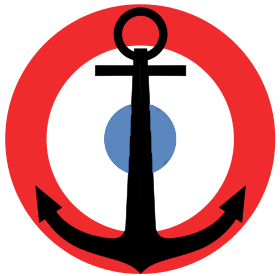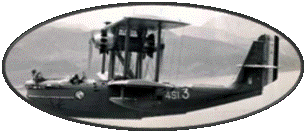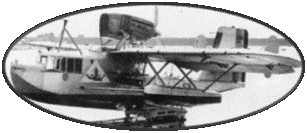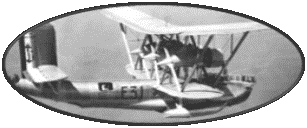 |
Site en Français
|
|
LATECOERE 523 - 522 - 521
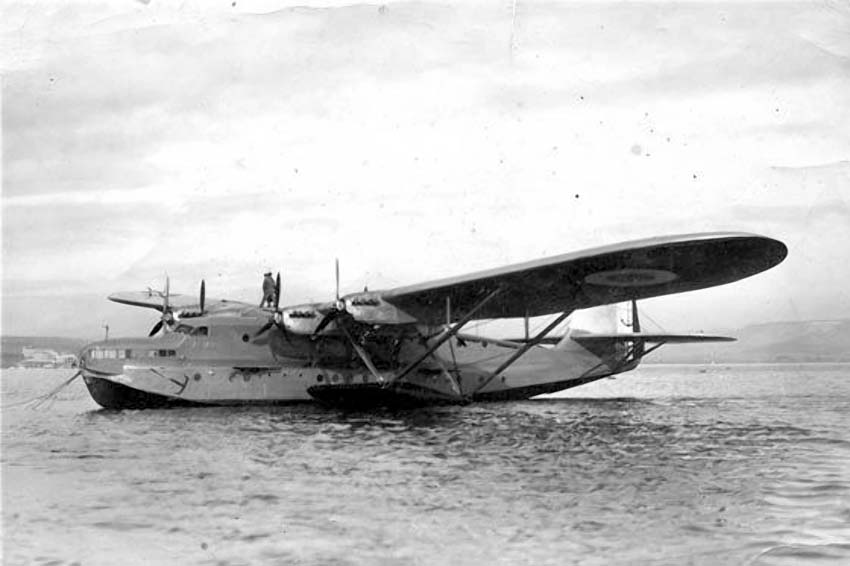
Technical
Specifications
|
Type : Laté
523
|
6-Engine High Wing Hull
Exploration Seaplane
|
Date first flight
|
January
20, 1938
|
|
Wingspan
|
49,31 m
|
Lenght
|
31,77 m
|
|
Height
|
9,07 m
|
Wing Area
|
330 m2
|
|
Empty Weight
|
22820 Kg
|
Max. Takeoff Weight
|
41800 Kg
|
|
Cruising Speed
|
190 km/h.
|
Maximum Speed
|
260 km/h
|
|
Climbing Speed
|
m in mn
|
Service ceilling
|
5500m
|
|
Range
|
5940 kms
|
Crew
|
From 10 to 14 Men
|
|
Motorization
|
6 Engines
(4 front and 2 rear) Hispano-Suiza 12Y-27 - 12 Cylinders in
V of 900ch each
|
|
Armament
|
One 7.5mm Darne machine
gun in back turret
Four 7.5mm Darne machine guns on both sides of the fuselage
6 bombs of 200kg and 4 bombs of 410kg attached to beams
on the fuselage
2 bombs of 500 kg
under the wings
|
5
Latecoere 523 and derivates have
been built since the date of the first flight on
January 1937 . They
are divided into :
- 1
Latécoère 521
- 1
Latécoère 522
- 3
Latécoère 523
The 5 Aircraft are listed
in the list below:

In 1935, the company Latécoère
presents an imposing seaplane. This corresponds to a specification
concerning the provision of a seaplane for passenger transport over
the North Atlantic. The aircraft, the Latécoère 521,
is powered by 6 engines Hispano-Suiza 12Ybrs-2 twelve cylinders
in V of 650 hp, arranged in two rows on either side of the wing:
4 at the front and 2 in back. The aircraft can carry 72 passengers
in very good comfort conditions. Passengers have lounges, bars,
kitchens, cabins with toilets, ... Called "Lieutenant de Vaisseau
Paris", the aircraft successfully completed many transatlantic
flights. It was destroyed by a typhoon in Florida in 1936, but bailed
out, he will continue his brilliant career for Air France and will
be requisitioned in 1939 and assigned to squadron E-6. It will be
destroyed in 1944 on the pond of Berre, during a bombing.
Faced with the success of
Latécoère 521, the Navy commands 3 Latécoère
522, derived civil version and 3 Latécoère 523, armed
version for exploration. Finally, only one copy of Latécoère
522 will be built. The war will not give him time to renew the prowess
of his predecessor, and the aircraft, called "Ville de Saint-Pierre",
will make only two transatlantic flights before being requisitioned.
He also joined the squadron E-6, or, like Latécoère
521, he will receive Hispano-Suiza 12Y27 engines to replace Hispano-Suiza
12Y37. However, in March 1940, the Navy will return the Latécoère
522 to Air France after having reassembled the original engine.
It will join North Africa, before joining the France in 1942. It
will be destroyed in 1944, during the liberation of France.
The three Latécoère
523, manufactured and delivered during the year 1938, will all be
delivered to Escadrille E-6. The design is quite similar to the
civil versions, and they are powered by six Hispano-Suiza 12Y-27
engines - 12 V-shaped cylinders of 900ch each, installed in pods
on both sides of the wing. The fuselage thus forms the main hull
and small additive wings, located at the bottom of the fuselage,
support additional stabilizing floats. The wing is common to the
Latécoère 521 and 522, except for the 4 fins on the
Latécoère 523, for 6 present on the other versions.
The front part of the fuselage, glazed, receives the position of
the navigator. The crew is composed of 10 to 14 men.
The defensive armament consists
of 5 machine guns Darne 7.5mm: 1 in turret dorsal and 4 others distributed
on both sides of the rear part of the fuselage. The aircraft can
carry 6 bombs of 200kg and 4 bombs of 410kg, attached to beams on
the fuselage and two other 500kg bombs suspended under the uprights
of the wings.
The 3 Latécoère
523, named Altair, Algol, Aldebaran will be assigned to Escadrille
E-6. In this squadron, based at the pond of Berre then Lanvéoc
Poulmic, they will find the Latécoère 522 and 521
requisitioned. They will be used in exploration missions but none
survived the conflict. The "Algol" will be accidentally
destroyed by a French Boat in September 1939. The "Aldebaran",
under repair in Poulmic, will be abandoned and destroyed in June
1940, so that it does not fall into the hands of the Germans. When
the last, the "Altair", it will be removed from service
in August 1942, for lack of spare parts.
More detail in the "Versions"
section below
Versions
|
Type
|
Photos
|
Nombre
|
Descriptif
|
|
Latécoère
521
|
 |
1
|
The
Latécoère 521 makes its first flight on June 17,
1935, and takes the name of "Lieutenant de Vaisseau Paris".
This large Transatlantic can comfortably carry 72 passengers
on 2 levels; In December 1935, he made flights between Biscarosse
and North America, through Dakar, Martinique, .... But it will
sink at anchor in Florida during a Hurricane January 14, 1936.
Referred to, it will be returned to France, or after repair,
and registered F-NORD, he resumed his long flights under the
colors of Air France. From October to December 1937, with Henri
Guillaumet at the helm, he will break records, including distance
with a flight of nearly 5800kms between Morocco and Brazil,
and will perform in August 1938, a flight Biscarosse-New York.
Requisitioned in 1939,
he will be attached to E6 Squadron and will patrol the North
Atlantic. The aircraft will be destroyed during an aerial
bombardment on the pond of Berre in August 1944.
|
|
Latécoère
522
|
 |
1
|
Derived
version of Laté 521, named "Ville de Saint-Pierre".
Registered F-ARAP, it makes its first flight on April 20, 1939.
It is powered by 6 Hispano-Suiza 12Y37 more powerful. Its interior
layout is revised, and the design of the front of the fuselage
is changed. He will only have two transatlantic flights before
being requisitioned and joining the E-6 Squadron. The Navy will
however make it to Air France in February 1940, and he joined
Port Liautey on June 24, 1940. In 1942, he managed to force
the allied blockade of Djibouti and Dakar to reach the pond
of Berre where it will be destroyed in 1944 |
|
Latécoère
523
|
|
3
|
A
militarized version commissioned in 1936 by the Navy, enthusiastic
about the success of the Laté 521. The fuselage is longer
(31.77 for 31.62m) and the interior is of course reviewed for
its new function. The 3 aircraft will be named "Altair",
"Algol" and "Aldebaran". The 3 aircraft
delivered between January and October 1938, will be assigned
to the Escadrille E-6 based on the pond of Berre, then Lanvéoc-Poulmic.
- The Altair, which
made its first flight on January 20, 1938, will be withdrawn
from service in August 1942
- The Algol makes its
first flight on July 16, 1938. It will be destroyed by accident
following an accidental ditching off Ouessant in September
1939. The torpedo maker "Le Boulonnais" trying to
tow it, hit it and damage it severely: the aircraft, lost,
will be completed and sunk.
- The Aldebaran flew
on October 21, 1938. June 18, 1940, under repair, will be
abandoned and scuttled at Poulmic
|
Bibliography
1 ) _ Larivière Editions
- From December 2003 to April 2004
- Le
Fana de L'Aviation No409 - 410 - 411 - 412 - 413
: "Le premier Translatantique"
- Le Laté 521 "Lieutenant de Vaisseau Paris"





|
Photos
Album
|
